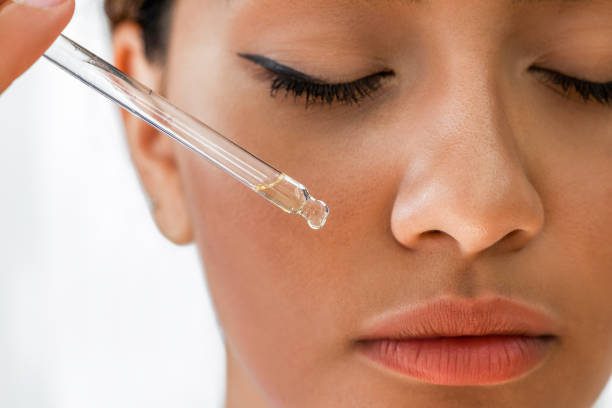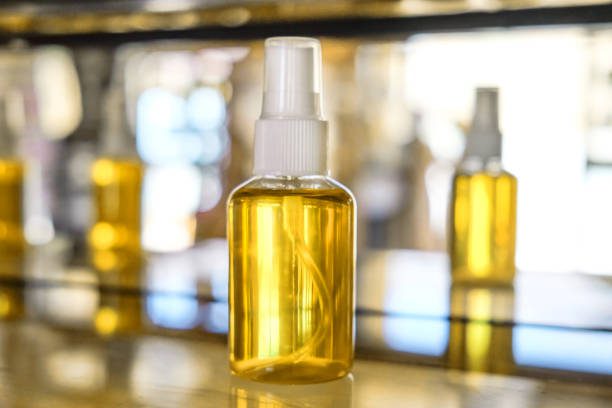Composition of Argan Oil
Argan oil, another staple of the Moroccan cuisine, sometimes also called the ‘liquid gold has gained attention from the beauty and wellness sector. Argan oil obtained from nut-like seeds of the fruit of the Argan tree naturally grows only in the Moroccan landscape; this product has been used in traditional Moroccan diets and as medication and cosmetics. But the question arises when it comes to refining the type of oil: This is perhaps why it was fated to be, namely in its inherent chemical makeup. In this article, we will look at the composition of argan oil in detail to discover the mystery behind this dry oil and how it starts to positively impact skin, hair, and general health.
The Basics of Argan Oil
As we proceed and get into the chemical composition of argan oil, it is necessary to note how it all started. The Argan tree, scientifically classified as the Argania spinosa, is native to the south-west of Morroco. This oil is gotten from kernels, which grow between branches and stems within the fruit of this tree; it has been processed for generations by Berber women.

Breaking Down the Chemical Composition of Argan Oil
The chemical composition of argan oil is a molecular compound of a number of different components that add up to the substance’s advantageous characteristics. It is high time that we took a closer look at the principal ingredients that go into making this divine oil.
Fatty Acids: The Basis of the Benefits of Argan Oil
The key constituent of argan oil, which is its set of fatty acids, will be scrutinized in this part. These fatty acids have a significant responsibility for the duties of moisturizing and nourishing the skin through the oil. The chemical composition of argan oil includes:
Oleic Acid (Omega-9): Oleic acid is 43-49 % of the fatty acid content; it is easily absorbed in skins hence makes your skin well moisturized.
Linoleic Acid (Omega-6): Taken averaged from 29-36 %, of the total fatty acids the compound plays important role in maintaining skin barrier and skin hydration.
Palmitic Acid: This saturated fatty acid can account for 11–15% of the total fatty acid and has a role in skin softening.
Stearic Acid: Reporting in total fatty acid values at 4-7%, stearic acid has the primary function of a skin emollient.
Antioxidants: The Protective Shield
Antioxidant potential of argan oil also adds up to its chemical make up. These powerful compounds help in shielding the skin and body in general from the effects of free radicals which accident and age as well as other diseases. Key antioxidants in argan oil include:
Vitamin E (Tocopherols):
The amount of vitamin E in Argan oil is meager, ranging between 600–900 milligrams per kilogram. This antioxidant is used in skin care as this free radical scavenging antioxidant.
Polyphenols:
These phytochemicals enhance the moisturizer property of argan oil and improved its anti-inflammatory property and protects against the free radical.
Squalene:
This is one of the antioxidants present in the natural health supplements to help in retaining skin wetness and firmness.
Sterols: Supporting Skin Health
The chemical composition of argan oil also covers plant sterols, which are essential in the healthy state of skin. These compounds include:
Schottenol:
This sterol aids in enhancement of skin metabolic activities as it has a role to play in skin phase killing.
Spinasterol:
Spinasterol has been found to possess anti-inflammatory effects, and its presence in argan oil makes it have a positive effect on skin.
Triterpene Alcohols: The Healing Touch
Another important characteristic of the chemical composition of argan oil is the content of triterpene alcohols. These compounds include:
Butyrospermol:
Responsible for its superb anti-inflammatory effects, butyrospermol is one of the ingredients that help argan oil calm inflammation in skin conditions.
Tirucallol:
This compound is not only credited with anti-tumor activity, but its exact function has not been adequately scientifically established yet.
The Combinant of Elements in Argan Oil
What is truly remarkable about the chemical composition of argan oil is that not only are these individual compounds present, but they are also linked to function in a synergistic manner. Owing to this dual characteristic, argan oil has numerous uses, including skincare, anti-aging, and even trace health benefits.
How Effective Is Argan Oil, Really?
Studies regarding the chemical composition of argan oil have explained its mode of operation. In sum, because of the fatty acids and antioxidants contained in argan oil, the level of inflammation as well as the level of elasticity in skin are reduced; moreover, the growth of certain kinds of cancers are also slowed down.
Sustainability and the future of Argan oil
It is, therefore, interesting to consider the sustainability of argan oil as demand increases for this natural product. It has been used because of this chemical composition of argan oil, and measures are being taken with the aim of restoring the practice of sustainable yield of the plant and boosting the local people’s engagement.

Conclusion
The chemical composition of argan oil can be viewed as one of the markers of environmental creativity. This unique combination of fatty acids, antioxidants, sterols, and other valuable substances acts in synergy to give a number of advantages for skin, hair, and the rest of the body. New information is being revealed about the chemical composition of argan oil every time, and therefore the application of its utility may increase in the future. If used in the beauty creme or in a meal, people can testify that there is no other natural product quite like Argan oil.
FAQs
Is the chemical composition of argan oil different depending on how the juice is made?
Indeed, the influence of the extraction method can be a bit higher for the chemical composition of argan oil. Organic unッne unscented cold press argan oil has a higher potency of essential nutrients as opposed to when the extraction method involves the use of heat or chemicals.
Can the chemical composition of argan oil degrade over time?
As with other natural oils it is characterized by the possible change of its composition with time, or the process of oxidation may influence it.t. On the other hand, argan oil is more stable due to the presence of a large volume of antioxidants within it. Store a bottle of argan oil in a cool dark place and should ideally be consumed within 1 to 2 years after the bottle has been opened.

